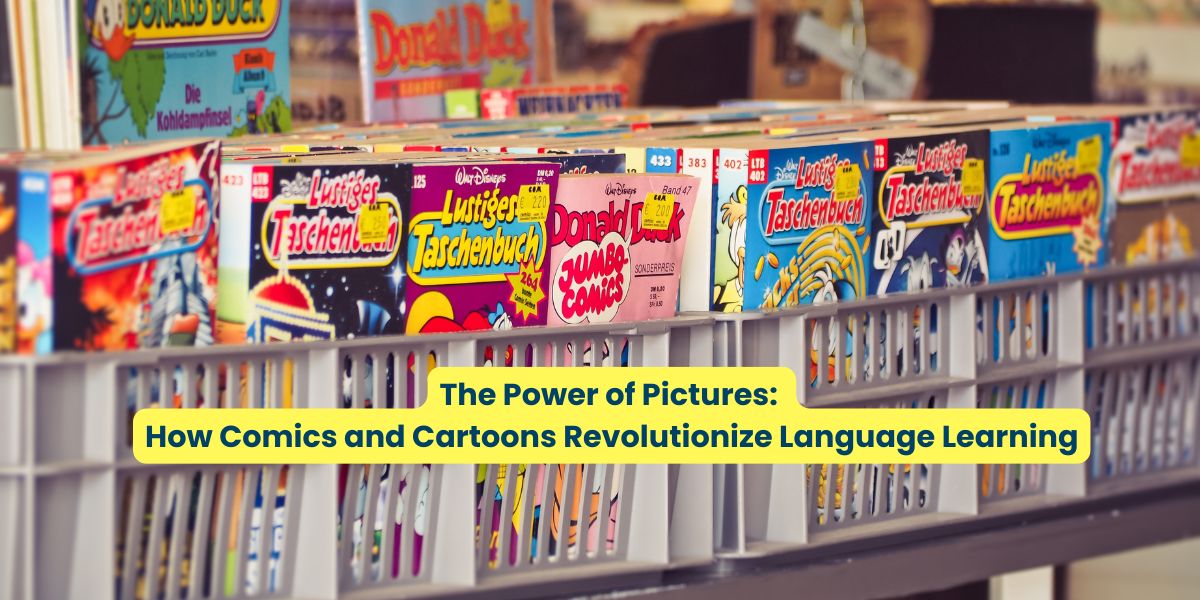
The Power of Pictures: How Comics and Cartoons Revolutionize Language Learning
The Power of Pictures: How Comics and Cartoons Revolutionize Language Learning
- By Janaki K.B
When I was a child, I struggled with reading. Long paragraphs felt overwhelming, and textbooks drained my energy. Then one day, I picked up a comic book. The colorful panels, expressive characters, and bite-sized text pulled me in. Before I knew it, I was flipping pages, laughing at the jokes, and—without even realizing it—learning new words. That’s the power of comics. They make language learning natural, fun, and immersive.
A child’s brain processes images 60,000 times faster than text. That’s why comic books and cartoons captivate young minds so effortlessly. But here’s the real magic—these visual storytelling tools aren’t just for entertainment. They are powerful allies in language learning, making reading, writing, and comprehension far more engaging and effective.
Why Visual Media Works for Language Learning
When we pair words with images, our brains absorb and retain information more effectively. Comics and cartoons combine visuals with text, providing context, emotion, and action all at once. This multimodal approach reinforces vocabulary, grammar, and storytelling skills in a way that traditional textbooks rarely do.
1. Reading Becomes Effortless (and Fun!)
Comics simplify reading. The combination of text and imagery helps readers infer meaning from context, reducing frustration and increasing confidence. Whether it’s a reluctant reader or a language learner struggling with complex sentences, comics provide an accessible entry point into the world of words.
Actionable Tip: Choose comics with clear dialogue and rich visuals, such as Tintin, Garfield, or Asterix, to help learners associate words with actions and emotions.
2. Writing and Vocabulary Growth Through Creativity
When students create their own comics, they engage in storytelling, dialogue writing, and structuring narratives—all essential writing skills. Plus, comics embed vocabulary in real-life dialogue and situations, making new words easier to remember and use.
Actionable Tip: Provide blank comic strip templates and let students craft their own short stories. Encourage them to list new words and guess their meanings from context before checking a dictionary.
3. Listening and Speaking Through Animated Stories
Cartoons offer the added advantage of sound—intonation, pronunciation, and natural speech patterns. They expose learners to authentic accents, conversational speed, and emotional expression, which textbooks cannot replicate.
Actionable Tip: Use subtitles! Have students watch a cartoon first with subtitles, then without, to improve listening skills. Shows like Peppa Pig or Dora the Explorer work well for beginners.
Integrating Comics and Cartoons into Daily Learning
The best part? You don’t need a structured lesson plan to make this work. Simply introducing visual media into daily routines can create massive learning gains.
- Parents: Read comics with your child and discuss the story together.
- Teachers: Incorporate comic strips into writing assignments.
- Students: Watch short cartoons in a target language and mimic the dialogue.
Final Thoughts: Learning Beyond the Classroom
Language learning doesn’t have to feel like a chore. Comics and cartoons inject fun, creativity, and curiosity into the process, making words come alive in ways that textbooks never could. Whether you’re a parent, teacher, or student, embracing visual media can turn language learning into an adventure!
So, why not grab a comic or turn on a cartoon today? You might be surprised at how much language you pick up—effortlessly.




I totally agree with you on this!! I recently read a few comics in my session with children. They thoroughly enjoyed it. We also drew a few new funny comic characters that the children loved to create. We took simple jokes and tried to draw comic strips for those jokes. Handy and practical tips shared mam….wonderful….